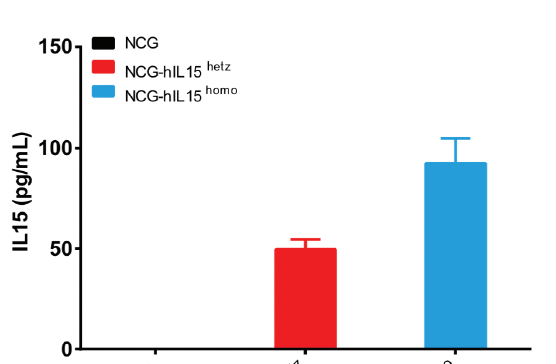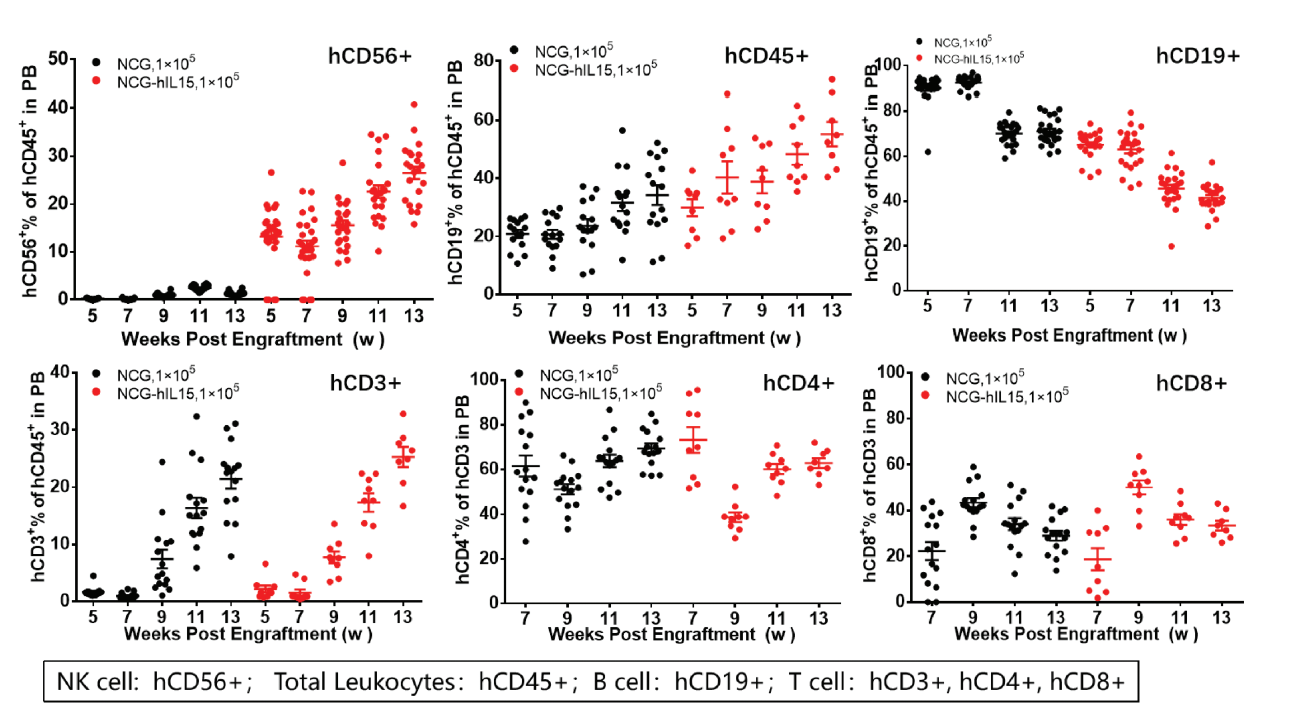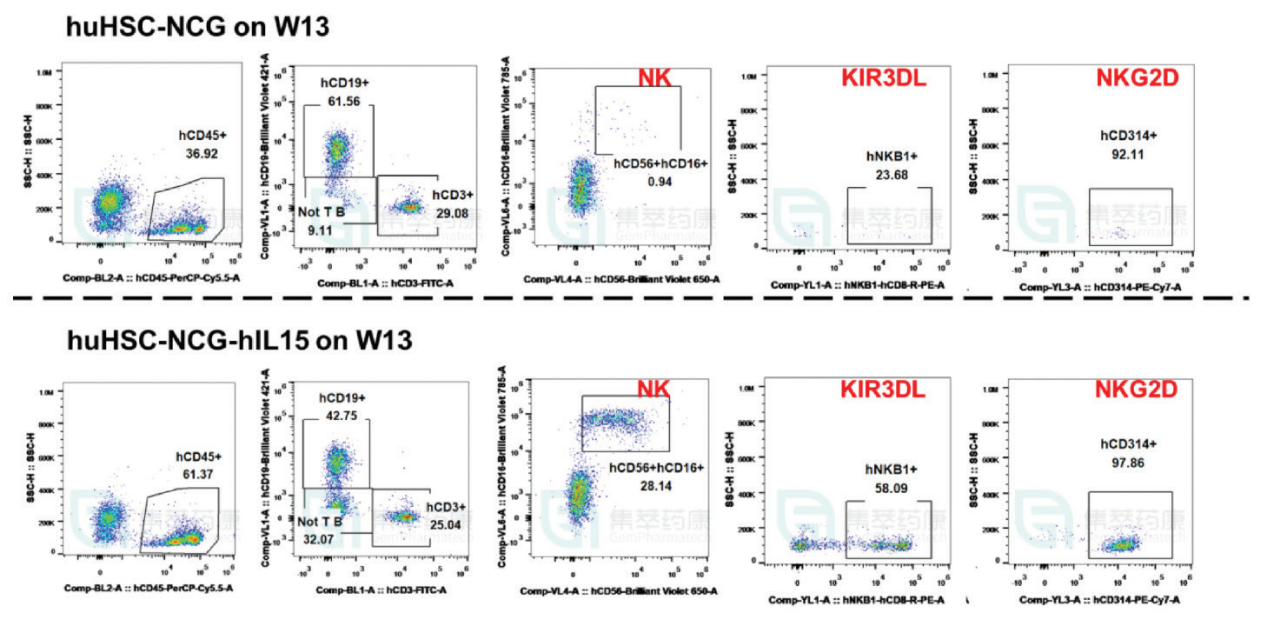Interleukin-15 (IL15) is a pleiotropic cytokine produced by activated monocytes, including macrophages, epidermal cells, and fibroblasts, exhibiting biological activity similar to IL2. IL15 can activate and mediate the proliferation and survival of T cells, B cells and NK cells. By knocking in humanized IL15 in an NCG mouse model, GemPharmatech produced the next-generation NCG-hIL15 strain, which promotes the colonization and activity of human-derived NK cells. To obtain the huHSC-NCG-hIL15 model, human hematopoietic stem cells (CD34+HSC) are transplanted into NCG-hIL15 mice.
The lifespan of huHSC-NCG-hIL15 is more than 36 weeks making huHSC-NCG-IL15 mice an ideal animal model to evaluate the efficacy of human anti-tumor antibodies based on T cells and NK cells.
Applications
Engraftment of human-derived tumors for the screening of relevant drugs, especially for the evaluation of drug efficacy based on ADCC effects.
Cell derived xenograft (CDX), Patient derived xenograft (PDX) models requiring an immunocompetent human immune system in mice
Human hematopoietic and immune system research
Supporting data
1. hIL15 expression in peripheral blood of NCG-hIL15 mice

The expression of human-derived IL15 was detected in both heterozygotes and homozygotes of NCG-hIL15 mice, with higher expression levels in homozygotes.
2. Immunophenotypes of huHSC-NCG and huHSC-NCG-hIL15 mice

Flow cytometry was used to determine the reconstitution level of each immune cell in the peripheral blood of huHSC-NCG and huHSC-NCG-hIL15 mice at 7, 9, 11, and 13 weeks of birth. The detection indexes were hCD45, hCD3, hCD19, hCD4, hCD8, hCD56. The level of hCD45+ cells reached levels over 20% 5 weeks after inoculation. Meanwhile, hCD3+ T cells gradually increased and developed hCD4+T and hCD8+T subpopulations. Compared with huHSC-NCG mice, CD56+NK cells displayed higher reconstitution levels.
3. Function of NK cells in peripheral blood of huHSC-NCG and huHSC-NCG-hIL15 mice

The NK cell functional proteins was characterized at week 13 post engraftment. Peripheral blood sample was taken from huHSC-NCG and huHSC-NCG-hIL15, stained with CD56, CD16, KIR3DL and NKG2D, and analyzed by flow cytometry. Compared with huHSC-NCG, the humanization of NK cell reconstruction levels increased significantly in huHSC-NCG-hIL15 mice, and the functional proteins KIR3DL and NKG2D were also detected.

